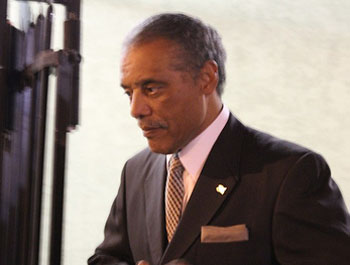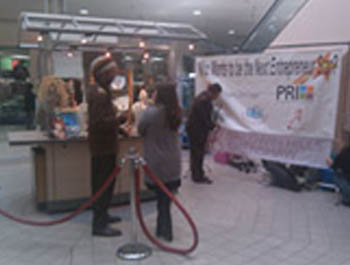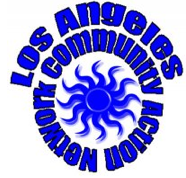
Bernard Parks officially won a third term on the Los Angeles City Council today after the City Clerk’s Office released a final tally giving him 51.21 percent of the vote in the March 8 election.
Parks received 9,482 votes, while his closest challenger, Forescee Hogan-Rowles got 8,058 votes, or 43.52 percent, according to the clerk’s figures.
Parks did not wait to declare victory—he announced that he had won on election night after unofficial results gave him 50.89 percent of the vote. Hogan-Rowles, however, did not concede,
saying the number of provisional and vote-by-mail ballots meant that Parks might not have the 50 percent of the vote needed to avoid a runoff.
In a campaign update sent via email, Hogan-Rowles said, “I’m proud of our campaign and the coalition we built together with workers and neighborhood leaders. We came just a few votes away from forcing Bernard Parks into a runoff—even though he used to be one of the most popular leaders in the City.”
She continued, “Our campaign sends an important message to elected leaders like Bernard Parks, who ignore their constituents and the workers who keep our city working: no matter how popular you think you are you can’t take the people for granted.”
Photo by Sarah Golden
Read more on this topic:
Hogan-Rowles advocates a run-off election
Bernard Parks celebrates election in Leimert Park
City Council candidates discuss the issues in South LA









 Soto, 38, remembers when he used to waste time in parks with his friends; a few of them joined, but he avoided their path because of the boxing gym.
Soto, 38, remembers when he used to waste time in parks with his friends; a few of them joined, but he avoided their path because of the boxing gym. In its first week, the center had over seven members sweating every evening. But the hard work isn’t going to stop in the gym.
In its first week, the center had over seven members sweating every evening. But the hard work isn’t going to stop in the gym. Three small business hopefuls faced the last round in a competition Thursday to jump-start their businesses. The Los Angeles Urban League and Baldwin Hills Crenshaw Plaza have teamed up to give away a six-month kiosk lease to the winner.
Three small business hopefuls faced the last round in a competition Thursday to jump-start their businesses. The Los Angeles Urban League and Baldwin Hills Crenshaw Plaza have teamed up to give away a six-month kiosk lease to the winner.
 Los Angeles Neighborhood Housing Services, Inc.
Los Angeles Neighborhood Housing Services, Inc. Fair Housing Foundation
Fair Housing Foundation Broadway South Neighborhood Revitalization Project
Broadway South Neighborhood Revitalization Project Housing Rights Center
Housing Rights Center Los Angeles Community Action Network: L.A. Right to Housing Collective
Los Angeles Community Action Network: L.A. Right to Housing Collective The law was signed by Obama one year ago and will be phased in over a span of three years. For Nina Sharky, the act brought about a change in heath care coverage, but it wasn’t one she’d hoped for.
The law was signed by Obama one year ago and will be phased in over a span of three years. For Nina Sharky, the act brought about a change in heath care coverage, but it wasn’t one she’d hoped for.




